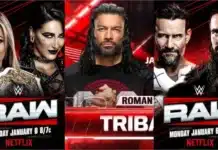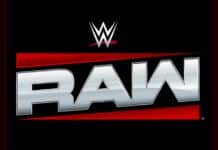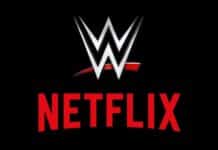Today marks twenty years since the final broadcast of WCW Monday Nitro on TNT, a night that changed the industry forever and was the beginning of the end of the biggest boom period in the history of the professional wrestling business. The truth is than fiction era of the sport was so jam-packed with classic moments, controversy, and fierce competition that despite several books and documentaries over the years, the topic remains a staple of podcasts and a part of the wrestling discussion today.
The reason for this is because there were so many different aspects that were involved and had a domino effect on numerous other pieces of the puzzle. Three years ago, I penned an article to chronicle the anniversary of the final Nitro, with a focus on the specific business decisions and the aftermath from it. But, there are so many angles to take because of the nature of the subject, which is why the previously mentioned podcast market exist for these stories. The narrative you will get on this time frame almost fully depends on who you ask, and if they had an investment in the results. For example, Eric Bischoff, who doesn’t deserve the amount of grief he gets for his time as executive producer of WCW, but doesn’t necessarily deserve the amount of credit he sometimes gives himself on his podcast, isn’t going to be as critical of his own decisions as someone with an outside perspective. On the flip side, The Wrestling Observer’s Dave Meltzer, who is one of the best historical resources for the business, usually boils Bischoff’s success down to two good years with Vince McMahon’s stars and the lightening in a bottle of Bill Goldberg, which isn’t accurate either.
Still, it’s more or less unanimously agreed that when WCW was bought for pennies on the dollar by Vince McMahon, it completely changed the landscape of the industry, and in many ways, has been a different business in the past two decades.
Most importantly, the purchase of WCW scorched the earth in terms of the landscape of wrestling because for the first time in the history of the business, there was only one national organization with no alternative and it can’t be understated how that aspect itself was a total shift in the dynamic of the sport. When McMahon’s national expansion of the 80s overwhelmed the territory system, the industry consolidated, but there were still two major competitors in the United States. Classic regions like Mid-South, Florida, and Texas faded away when big budget wrestling made it more difficult for smaller territories to compete with other products. The AWA existed, but stumbled upon its attempt to expand, with the only reason it survived to 1990 from the money Verne Gagne made in the group’s heyday. So, for the purposes of this discussion, the national level of the late-80s was WWF and Jim Crockett Promotions.
Even when almost half a dozen territories closed, Jim Crockett Promotions was still there to offer an alternative. When JCP spent itself too far in debt, Ted Turner, who credited pro wrestling as a staple of his network, rescued the organization and kept it a national entity with the purchase to keep it on TBS. The point being there was always a foundation for a new chapter to be built upon, but when Vince bought WCW, another option would have to be built from scratch, which is exponentially more difficult than a new chapter of an already existing organization.
The story of NWA-TNA and its peaks and valleys is a another story for another time, but if nothing else, the tale of TNA underscores just how difficult it is to truly become an established national company. A group can have the right talent and the right distribution, both being extremely difficult tasks in their own right, but if there’s not the right philosophy then there will be limited success.
As we’ve seen, it took almost the twenty years since the final Nitro for another national group to be considered a contender in the business. All Elite Wrestling isn’t perfect and nobody should expect it to be, but it’s a profitable project that gave fans and talent more options, which has already been extremely beneficial to the industry.
In some ways, diehard fans in the “wrestling bubble” don’t realize just how many hurdles All Elite had to clear and the progress its made so far in its existence.
The ability to land a national television deal and the amount of money that must be invested for it to even be a possibility will prevent almost every organization from trying to attempt it. Keep in mind, the production costs alone are thousands of dollars and after that type of investment there’s no guarantee that the show would be offered a TV deal, which is why Global Force Wrestling didn’t get off the ground. TV Networks aren’t looking for pro wrestling content and with WWE as the representation of the sports in the United States, it’s possible that executive would look at anything else as secondary.
All Elite had the ability to use the All In pay-per-view as a “pilot” to sell something to TNT, which eliminated much of the initial risk involved in trying to land a TV deal. Still, this is why Tony Khan was one of the few investors that could’ve launched a national company because it takes millions of dollars to start a project from scratch.
Another aspect of the WCW purchase and the further consolidation of the industry is that it allowed WWE to dominate and expand its market share. Make no mistake about it, one of the many reasons that the company is worth billions of dollars is because of its ability to take advantage of the fact it was the only national company for several years. Ultimately, the biggest aspect of the purchase of WCW was that it emphasized the many reasons that the Monday Night war and the competition provided some of the most entertaining TV in the history of the industry.
What do you think? Comment below with your thoughts, opinions, feedback and anything else that was raised.
Until next week
-Jim LaMotta
E mail [email protected] | You can follow me on Twitter @jimlamotta







